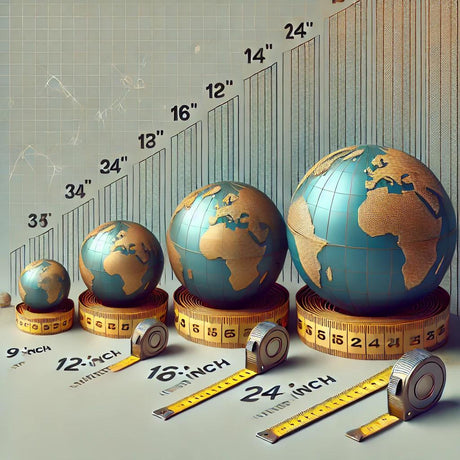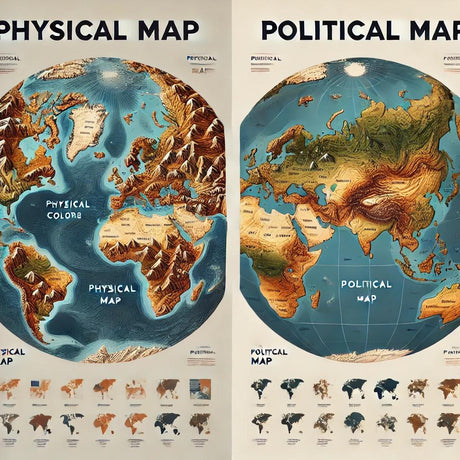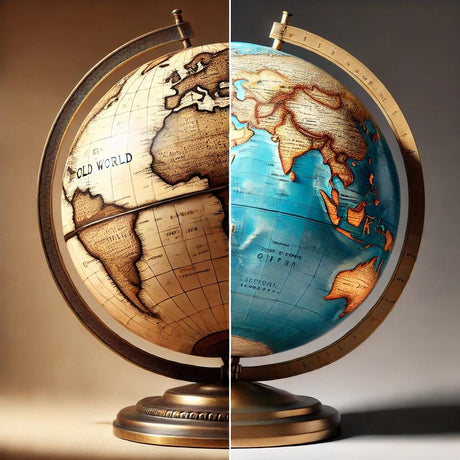
In today's world, the idea that the Earth is flat has gained attention, even though extensive scientific evidence unequivocally proves that our planet is round. At Ultimate Globes, we pride ourselves on providing accurate and educational products, and this article aims to present clear, factual evidence that supports the round Earth model while debunking Flat Earth myths.
The Round Earth: Undeniable Evidence
-
Photographs from Space The most straightforward evidence comes from the thousands of images taken by astronauts and satellites, showing the Earth as a sphere. Organizations like NASA have been providing these images since the 1960s. You can view these images on NASA's official Image and Video Library.
-
Circumnavigation The ability to travel around the Earth in a continuous path, whether by plane, ship, or even on foot, proves its roundness. Historical journeys, such as Ferdinand Magellan's expedition in the 16th century, were only possible on a spherical Earth. The concept of circumnavigation is further explained by the National Geographic Society.
-
Earth’s Shadow on the Moon During a lunar eclipse, the Earth casts a shadow on the Moon. This shadow is always round, which would only be possible if the Earth were a sphere. This phenomenon has been observed and documented by astronomers for centuries. For more detailed explanations, refer to Astronomy.com.
-
Gravity Gravity pulls objects towards the center of mass, which causes planets to form into a spherical shape. The science behind this can be explored in more depth through resources provided by Physics.org.
Debunking Flat Earth Claims
-
Flat Earth Maps and Navigation Flat Earth maps do not accurately represent distances and directions on the Earth’s surface. This has been demonstrated through inconsistencies in flight paths and travel distances. Experts at Scientific American have published numerous articles debunking these maps.
-
Horizon Line Visibility On a flat Earth, we would be able to see much further than we can in reality. The curvature of the Earth limits our line of sight. This is why ships disappear hull-first over the horizon, a concept well documented by Live Science.
-
Gyroscopes and Airplane Navigation Modern navigation relies on gyroscopes, which work on principles consistent with a spherical Earth. Pilots and engineers, such as those from Boeing, can attest to the necessity of considering Earth’s curvature in their calculations.
-
Satellite Technology Communication and GPS satellites orbit the Earth, a feat only possible with a round Earth. These satellites provide services that are integral to modern life, as explained by the European Space Agency (ESA).
Conclusion
The belief in a flat Earth contradicts centuries of scientific understanding and observable evidence. At Ultimate Globes, we are committed to educating our customers with accurate, reliable information. The Earth is undeniably round, a fact supported by extensive scientific research and practical observation.
By promoting knowledge and understanding, we hope to dispel myths and misconceptions, ensuring that our educational products, like our world globes, continue to serve as valuable resources for learning and discovery.
References:
- NASA: Image and Video Library
- National Geographic Society: Circumnavigation
- Astronomy.com: Earth's Shadow
- Physics.org: Gravity
- Scientific American: Flat Earth Maps
- Live Science: Horizon Line Visibility
- Boeing: Gyroscopes and Navigation
- European Space Agency (ESA): Satellite Technology




